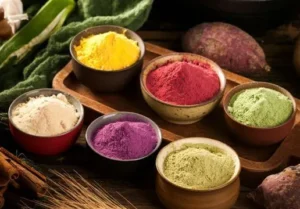How to Preserve Muscle While Losing Fat: A Comprehensive Guide
Achieving the delicate balance of maintaining muscle while shedding body fat is a common goal for fitness enthusiasts, yet it is often shrouded in misinformation. In this article, we’ll separate myths from facts and provide a science-backed, practical approach to ensure you retain your hard-earned muscle during a fat-loss phase. Whether you’re new to fitness or following a vegan fat loss and muscle retention guide, this resource is tailored for you.
Dispelling Common Myths
Before diving into the mechanics, it’s crucial to address prevalent misconceptions:
- Fat cannot turn into muscle: Despite popular belief, fat and muscle are distinct tissues with unique functions. Building muscle and losing fat require separate strategies.
- Cardio is not the sole solution for fat loss: While cardiovascular exercises can aid in calorie expenditure, a combination of strength training and balanced nutrition is more effective.
- Training harder is not always better: Overtraining can lead to muscle loss and burnout, counteracting your goals.
- Bulking and cutting are not mandatory: While these methods are popular among bodybuilders, it is entirely possible to maintain a lean physique year-round through a sustainable approach.
Understanding Fat Loss and Muscle Maintenance
Fat loss occurs when your body is in a calorie deficit, meaning you consume fewer calories than you burn. While this promotes fat burning, an excessive deficit can lead to muscle breakdown. The key is striking the right balance. Muscle preservation depends on adequate nutrition, targeted exercise, and recovery strategies. With the right approach, you can lose fat and retain muscle mass effectively.
The Science of Fat Loss
“Cutting” refers to reducing body fat while preserving lean muscle mass. This process hinges on creating a calorie deficit, where you consume fewer calories than your body expends.
How the Body Utilises Energy
In a calorie deficit, the body draws on stored energy sources, including fat and muscle. Fat is broken down into triglycerides, which are converted into adenosine triphosphate (ATP)—the body’s primary energy currency—through beta-oxidation. This process also produces by-products like carbon dioxide and water, expelled through respiration and excretion.
Why Muscle Preservation Matters
Maintaining muscle during fat loss is vital for health and performance. Lean muscle enhances metabolic rate, supports joint stability, and improves overall strength and endurance. Aesthetic goals aside, prioritising muscle preservation contributes to long-term health and functionality.
Avoiding Common Pitfalls
Many individuals undermine their progress by making avoidable mistakes during a cutting phase:
Overly Aggressive Calorie Deficits
Drastically reducing caloric intake can lead to muscle breakdown, as the body resorts to skeletal muscle for energy. To avoid this, aim for a moderate deficit of 10–20% of your daily caloric needs, typically equating to around 500 calories.
Eliminating Entire Food Groups
Excluding macronutrients like carbohydrates or fats can hinder performance and recovery. Complex carbohydrates (e.g., oats, quinoa, and sweet potatoes) replenish glycogen stores, while healthy fats (e.g., avocados, nuts, and seeds) support hormonal balance and nutrient absorption.
Inadequate Protein Intake
Protein is critical for muscle repair and growth. Aim for 1.2–1.6 grams of protein per kilogram of body weight daily, spread across meals to optimise absorption and satiety.
Strategies to Maintain Muscle While Losing Fat
Combining proper nutrition, exercise, and recovery is key to achieving your goals. Here are five expert-recommended strategies:
1. Prioritise Strength Training
Resistance training is essential for preserving and building muscle. Incorporate multi-joint compound movements such as squats, deadlifts, bench presses, and rows into your routine. Aim for 4–5 sessions per week, varying sets, reps, and intensity to challenge your muscles and promote growth.
2. Incorporate Cardiovascular Exercise Strategically
While strength training is paramount, cardio plays a supporting role in fat loss. High-Intensity Interval Training (HIIT) and Low-Intensity Steady State (LISS) are effective methods. HIIT boosts metabolism post-workout, while LISS provides steady calorie burn without excessive muscle strain.
3. Optimise Nutrition
A well-rounded diet is the cornerstone of muscle preservation and fat loss. Focus on:
- Complex Carbohydrates: Fuel workouts and recovery with options like whole grains, legumes, and vegetables.
- Healthy Fats: Include sources such as olive oil, flaxseeds, and walnuts to support cellular function and brain health.
- High-Quality Protein: Incorporate plant-based proteins like tofu, tempeh, lentils, and protein powders to meet daily requirements.
4. Supplement Wisely
While whole foods should form the foundation of your diet, certain supplements can enhance performance and recovery:
- Creatine: One of the most researched supplements, creatine boosts strength and endurance, aiding muscle preservation.
- Caffeine: Consuming caffeine pre-workout can improve focus and performance.
5. Emphasise Recovery
Rest and recovery are as important as training and nutrition. Schedule active recovery days, prioritise 7–9 hours of sleep per night, and incorporate stress-reducing practices such as yoga or meditation.
The Role of Vegan Nutrition
For those following a plant-based lifestyle, muscle preservation during fat loss is entirely achievable. Plant-based diets rich in whole foods provide ample nutrients while supporting ethical and environmental goals.
Tips for Vegan Muscle Preservation
- Diversify Protein Sources: Combine legumes, grains, nuts, and seeds to ensure a complete amino acid profile.
- Fortify Your Diet: Choose fortified plant milks and cereals for essential vitamins like B12 and D.
- Incorporate Superfoods: Moringa, spirulina, and hemp protein are nutrient-dense options that support recovery and muscle health.
FAQ: Muscle Maintenance and Fat Loss on a Plant-Based Diet
1. Can I build muscle on a vegan diet?
Absolutely. By consuming sufficient calories and high-quality protein from diverse sources, muscle building is achievable on a plant-based diet.
2. What are the best plant-based protein sources for muscle maintenance?
Tofu, tempeh, seitan, lentils, chickpeas, quinoa, and plant-based protein powders are excellent choices.
3. How can I ensure I’m getting enough nutrients?
Focus on a varied diet, including fortified foods, and consider a B12 supplement if needed.
4. Is it harder to lose fat on a vegan diet?
Not necessarily. A plant-based diet rich in fibre and whole foods can enhance satiety and make calorie control easier.
5. Do I need supplements to maintain muscle?
While not mandatory, supplements like creatine and branched-chain amino acids (BCAAs) can be beneficial for optimising muscle maintenance and performance.
6. How important is hydration?
Hydration is critical for muscle recovery and overall performance. Aim to drink at least 2–3 litres of water daily, adjusting based on activity level.
7. Can I follow intermittent fasting and still preserve muscle?
Yes, but ensure you consume adequate protein and calories during your eating window to support muscle maintenance.
Maintaining muscle while losing fat is a multifaceted process that requires balanced nutrition, strategic exercise, and adequate recovery. By adopting a plant-based approach, you can achieve these goals sustainably while supporting ethical and environmental values. Remember, consistency and patience are key—progress may be gradual, but the results will be well worth the effort.







